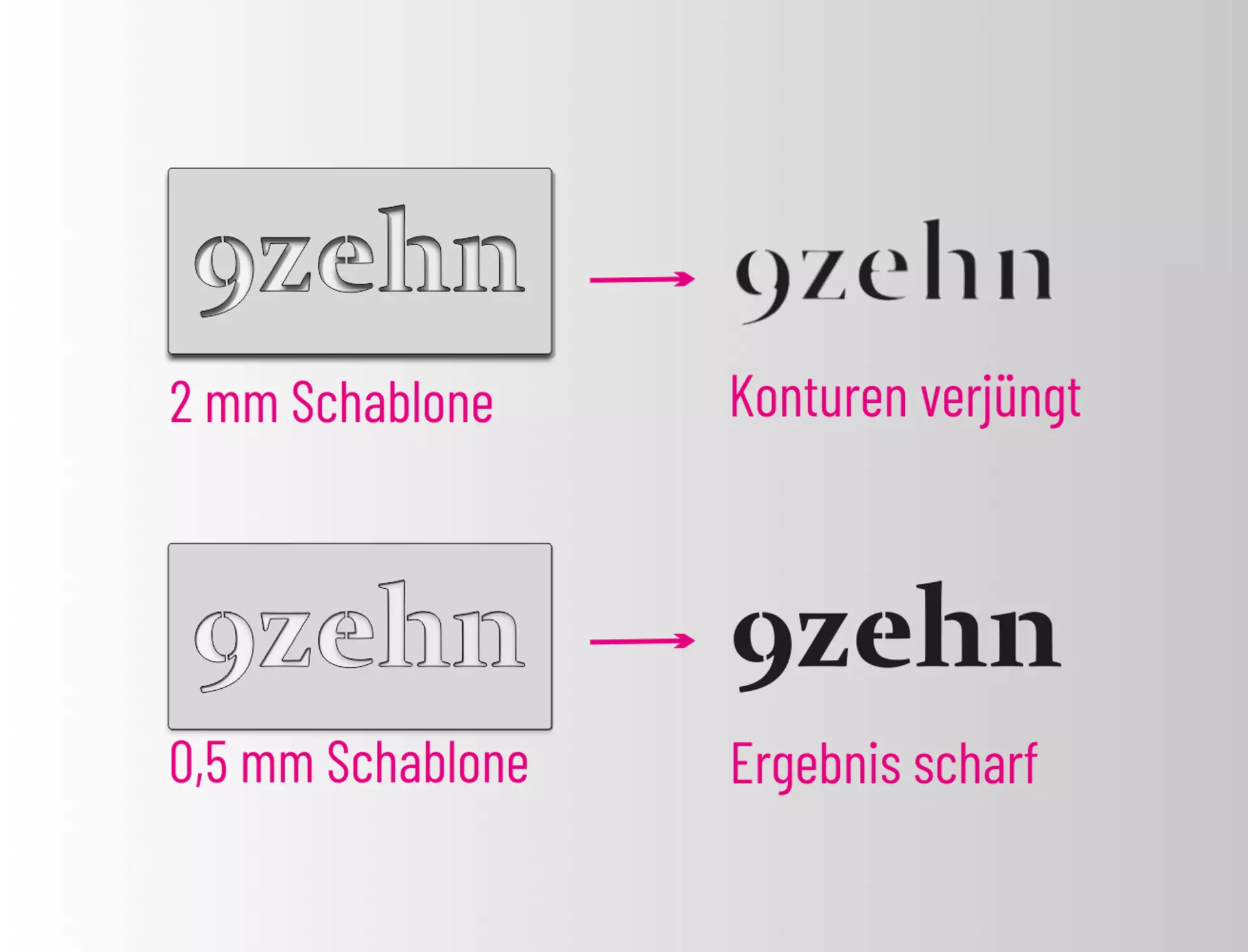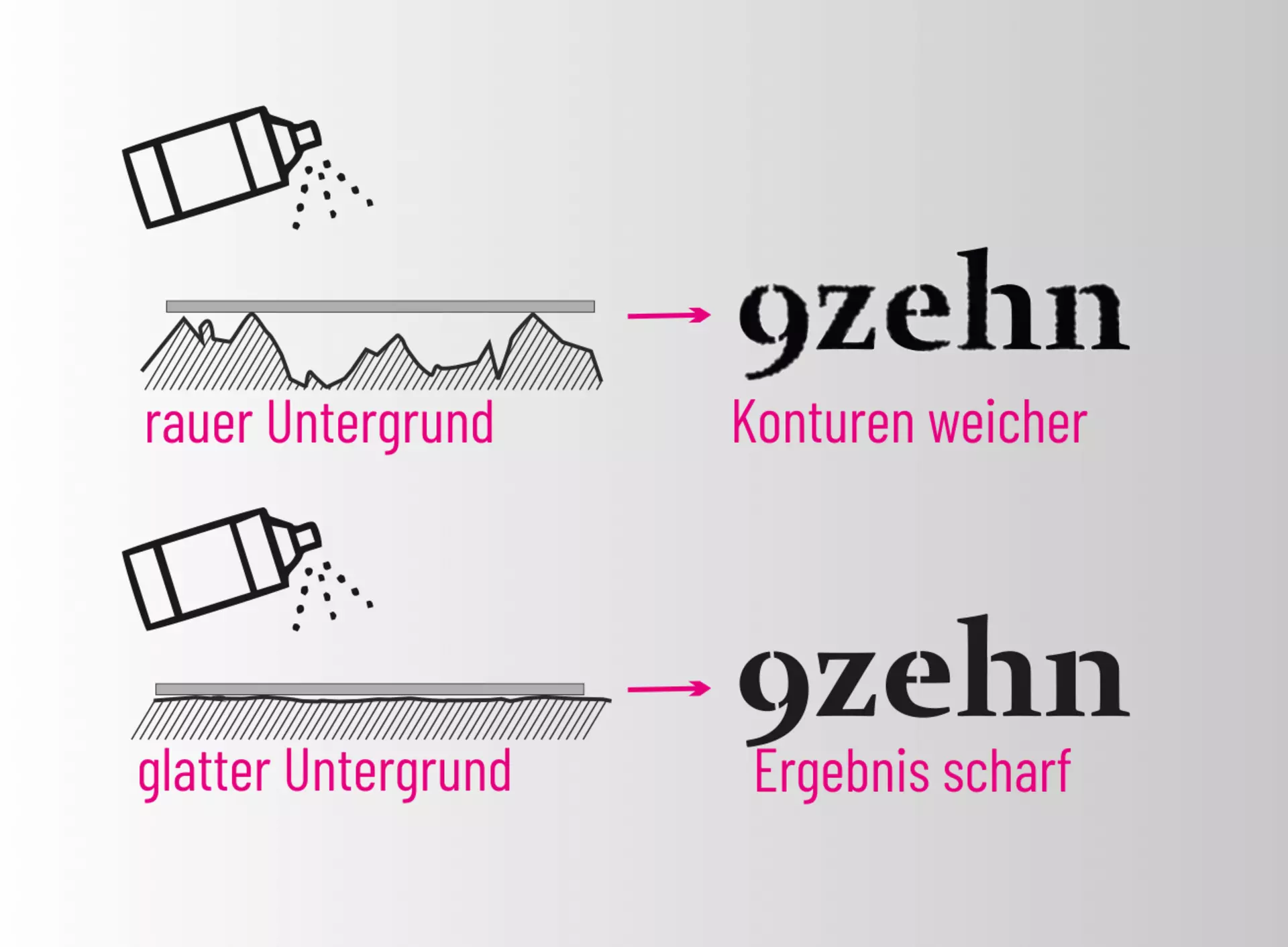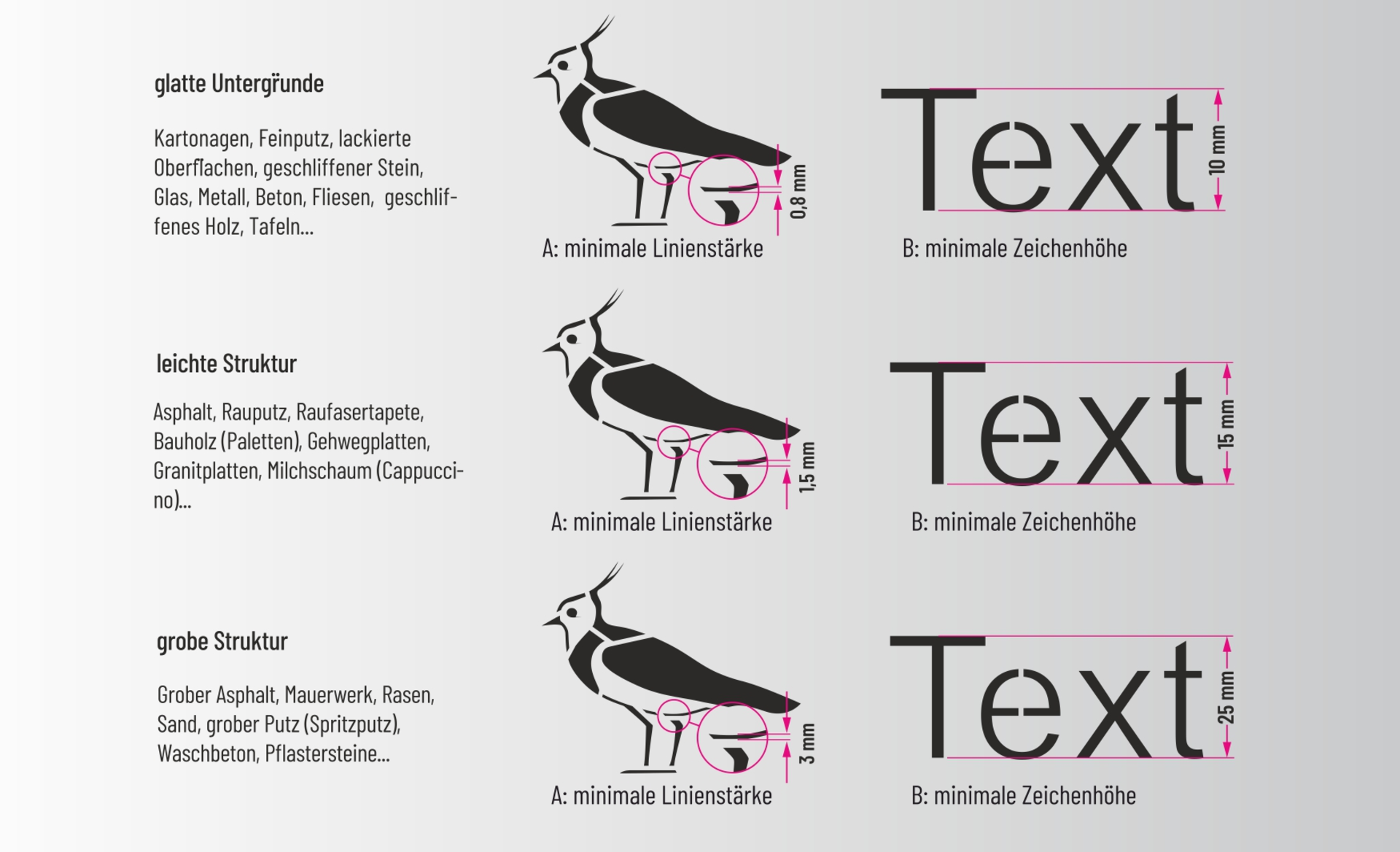Material thickness
The thicker, the better, right? Au contraire, mon frère!
Thinner stencils produce sharper motif contours, as the paint cannot penetrate the corners as well with thicker material. So we don't want to cut corners, we want to achieve the best possible result. That's why we choose stainless steel sheet metal rather than aluminum for our metal stencils. This allows us to achieve the same weight and stability with approximately one-third of the material thickness. The only exception to this are the burning stencils. These need to be slightly thicker so that they do not deform under the intense heat.
Production advantage
Our thinner material thicknesses, whether plastic (0.35 mm) or metal (0.5-1 mm), enable a much higher resolution during laser cutting. This means we can cut much more intricate texts and motifs. Of course, the stencils are still stable.



